Homeowners call a roofing contractor to take care of their roof. So, there’s confusion when they show up and say they need to come inside.
This isn’t something they expected, and now they’re worried about letting a stranger into their home. The last thing you want is to be put in this uncomfortable situation.
For over 30 years, the team at Bill Ragan Roofing has helped homeowners understand what happens when a roofer comes to your property. Now, I’ll do the same for you.
In this article, you learn if, when, and why a roofing contractor would need to come inside your home. After that, you’ll learn what a roofing contractor looks at during their roof inspection.
Does a roofing contractor need to come inside your home?
Whether or not a roofing contractor needs to come inside your home depends on the service you need. Let’s break down if and why a roofing contractor needs to come inside your home for roof repairs and a roof replacement inspection.
Does a roofing contractor need to come inside your home for roof repairs?
If you need roof repairs, it depends on what’s causing the roof leak. If it’s clear on the roof what’s causing the leak, the roofing contractor can probably do the repair without coming into your home.
However, hard-to-find leaks may require going inside your home to see where it’s coming in so they can track it to the source on the roof. For example, if a leak is coming into a bathroom, they know to inspect the plumbing vent pipe and pipe boot.
Does a roofing contractor need to come inside your home for a roof replacement?
A roofing contractor should come inside if you’re getting an estimate for a roof replacement. They need to come inside to inspect the ventilation system and condition of your roof decking in your attic space.
They’ll check if your ventilation system is performing adequately and determine if anything needs to be done. If your attic isn’t properly ventilated before your replacement, your new roof will have big problems.
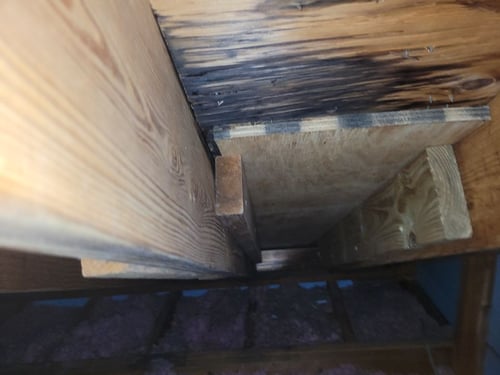
For roof decking, they’ll look for any rotting on the underside of the wooden boards. This gives them an idea of how much, if any, decking needs to be replaced.
If you have plank decking, they also need to check the gaps between the boards to ensure they meet installation and building code requirements. As of 2021, if there’s more than a 1/8” gap between planks, they must be replaced per the manufacturer’s installation instructions before the roofing material can be installed.
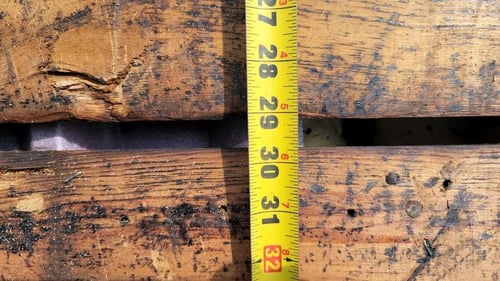
If your roofing contractor finds a gap larger than 1/8”, the boards must be replaced after your old roof is torn off. At the end of the day, a roofing contractor doing a roof replacement inspection should come into your home.
If they don’t, they’re doing you and your roof investment a huge disservice.
6 more things a roofing contractor should look at during a roof inspection
Now you know why and when a roofing contractor needs to come into your home. Remember, a roofing contractor should come inside to inspect your attic’s ventilation system and the condition of your roof decking when getting a new roof.
But there’s more they have to look at on your roof. So, what do they inspect once they actually get on your roof?
1. How many layers your roof has
The first thing a roofing contractor checks out on your roof is how many layers of shingles are on your roof. In most states, you’re only allowed to have 2 layers of shingles for fire safety reasons.
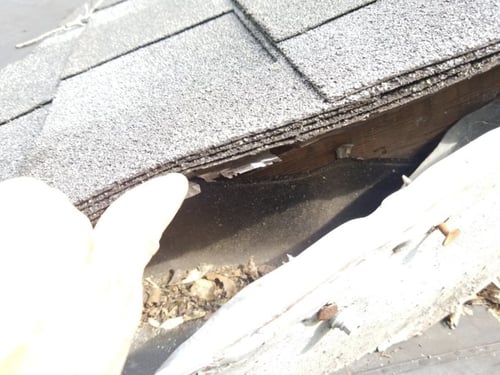
They need to check the number of layers to know how many layers need to be torn off during the tear-off process. If there’s more than one layer, your roof replacement estimate will state the number of layers to be torn off.
Just know that the more layers that need to be torn off, the more it adds to the cost of your new roof. This is simply because it takes more labor to remove and get rid of extra debris from the multiple layers.
2. The condition of your roof decking
While the bottom of your roof decking is inspected in your attic, they also check for rotten decking by testing if it’s spongy underneath their feet. If it is, they’ll have even more of an idea of how much needs to be replaced.
-1.jpg?width=500&height=391&name=DeckingRotten%20(2)-1.jpg) (Rotten roof decking found after tear off)
(Rotten roof decking found after tear off)
But just know that your contractor can’t always tell if your roof decking is bad just by walking on it. They’ll never know the true condition of it until the old shingles are torn off.
After the tear off, they’ll let you know how much decking is compromised and replace the boards before the shingles can be installed.
3. Your asphalt shingles
The next one is pretty obvious, but the roofing contractor will check the condition of your asphalt shingles. They’ll look for signs of a roof that needs to be replaced, such as granule loss, moss growing on your roof, and any noticeable problems with the shingles (missing or loose sections, cracking, blistering, or buckling).
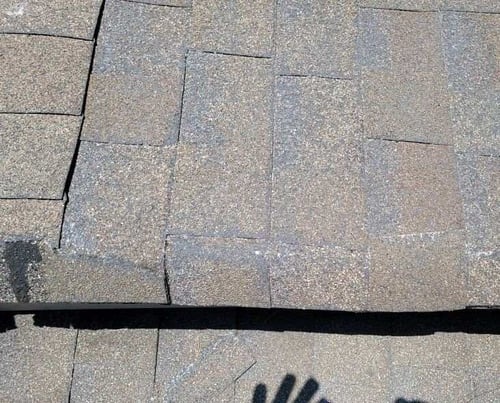
If you have any of the above, there’s no question that it’s about time to replace your roof. However, some roofing companies try to sell you a roof no matter what.
That’s why you should always get a second opinion to learn if you truly need a roof replacement.
4. Your chimney
While it doesn't provide a function on your roof, the roofing contractor will inspect your chimney. They’ll check the flashing, the condition of the mortar/siding, and the condition of the chimney cap.
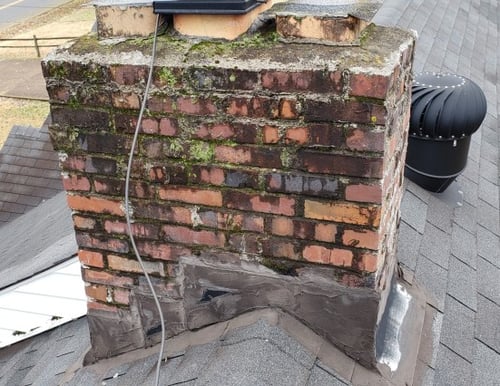
If there's moss or other vegetation in the mortar, then your chimney is starting to get moisture into it, which eventually turns into a leak that requires resealing the chimney. Another reason they need to check your chimney is to see if it needs a cricket.
A roof cricket is a double triangle structure built behind a chimney to divert water instead of hitting the flat wall on the back. Without a cricket, water pools behind your chimney which ultimately leads to a leak that’s costly to repair.
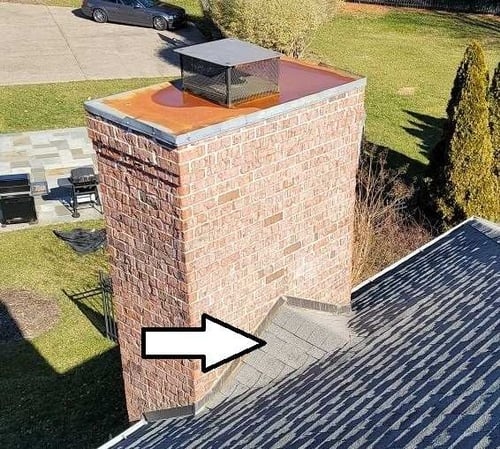
If your chimney is over 30 inches wide, a cricket must be installed perpendicular to the slope of the roof per the IBC (International Building Code). If you need a cricket, but the roofing contractor didn’t install one, your roof is not up to code.
Just know a roofing contractor can diagnose and repair a problem, but some chimney repairs require you to call an actual chimney company.
5. The condition of your roof vents and roof flashing
The next thing your roofing contractor should inspect is the condition of your roof vents and roof flashing. Roof flashing is metal installed anywhere your shingles butt against something, such as a wall, chimney, or open valleys.
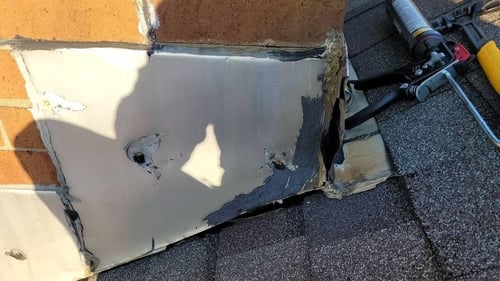 (Damaged roof flashing)
(Damaged roof flashing)
They’ll check the integrity of the metal and look for rusting that will eventually lead to a roof leak. Just know that some roofing contractors will tell you that replacing your roof flashing when getting a new roof isn’t necessary.
While this is true in very specific situations, replacing your roof flashing during a roof replacement is always recommended. Just like a roofing contractor checks your attic’s ventilation, they’ll also inspect the actual roof vents.
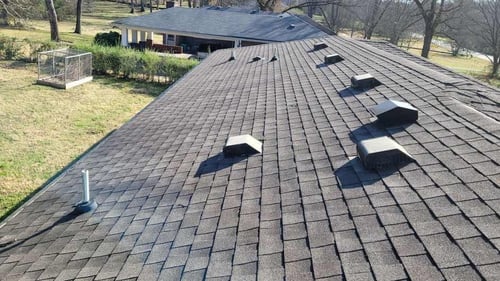
No matter what type of roof vent you have, they need to ensure your roof has the proper number of vents to ensure the attic space is ventilated correctly. If there isn’t the right amount, your roofing contractor will suggest adding vents or upgrading to a vent that’s better suited for your roof and attic.
6. Your gutters
Even though they’re not necessarily on your roof, a roofing contractor should always inspect your gutters and downspouts. They’ll check for cracks or open seams to see if the integrity is compromised.
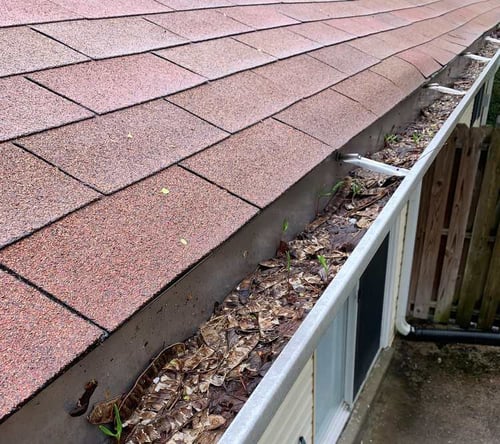
After that, they’ll look for blockages or restricted flow that could cause debris or vegetation to back up. This leads to water getting behind the gutters, which rots the soffit, the edges of roof decking, and accelerates the rotting of wood around your windows.
They’ll also look for signs of standing water to determine if the gutter is tilted in the wrong direction. Even though all of this is for an inspection, it’s also part of routine roof maintenance that you should get done yearly.
How do you hire a reputable roofing contractor for an inspection?
Now you know what a roofing contractor looks at when they get on your roof. And remember, they may need to come inside your home.
After reading this article, you’re ready to contact a reputable roofing contractor to schedule an inspection. Unfortunately, this isn’t as cut and dry as it seems.
The truth is the roofing industry doesn’t have a good reputation due to companies taking advantage of homeowners. That’s why I want to give you the steps needed to find one you can trust in your area.
Check out 6 Steps to Choose the Right Roofing Contractor so you can spot a reputable roofer from all the options in your area.



